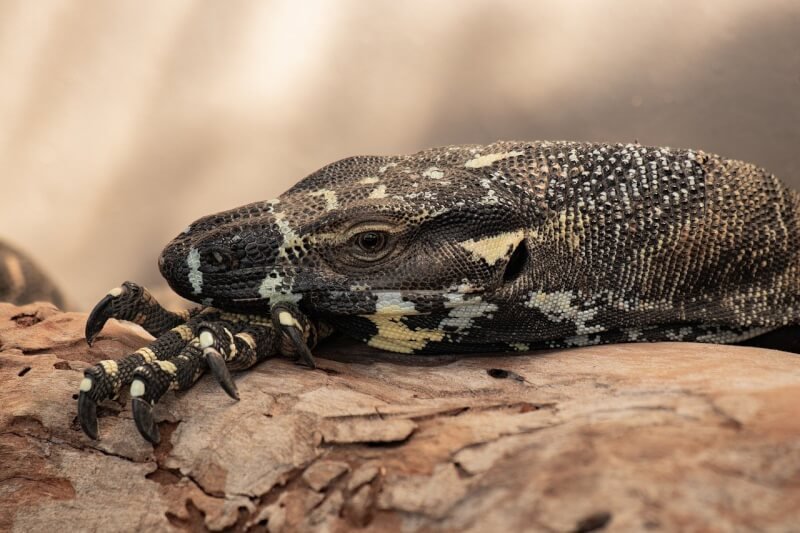Are you a proud snake owner looking to provide the perfect home for your scaly friend? Well, look no further than this article, where we will guide you on how to choose the right size enclosure for your snake. Creating a comfortable and secure habitat is essential for your snake’s well-being, and finding the right size enclosure is a crucial aspect of that. Whether you have a small corn snake or a large boa constrictor, we have the tips and tricks to help you make the ideal choice. So let’s dive right in and ensure your snake enjoys its new home to the fullest!
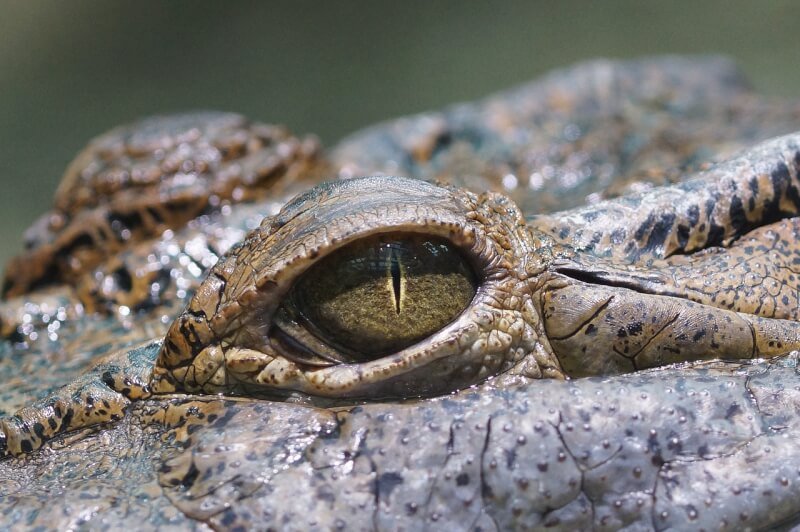
Factors to Consider
When choosing the right size enclosure for your snake, there are several factors you need to consider. These factors will ensure that your snake has a comfortable and suitable living space that meets its specific needs. Consider the snake species, age and size, activity level, climbing habits, and dwelling habits.
Snake Species
Different snake species have different space requirements. Some species, such as ball pythons, prefer smaller enclosures, while others, such as corn snakes, require more space to move around. Research and understand the specific needs and behavior of your snake species to determine the appropriate enclosure size.
Age and Size
The age and size of your snake will also play a role in determining the enclosure size. Juvenile snakes may initially require smaller enclosures, but they will eventually outgrow them and need larger spaces. Consider the potential growth of your snake to ensure you choose an enclosure that will accommodate its size as it matures.
Activity Level
The activity level of your snake should also be taken into account. Some species are more active and require more space to explore and exercise. If your snake is highly active, consider providing a larger enclosure with more room for movement and enrichment.
Climbing Habits
Some snakes, such as tree pythons or green tree pythons, are arboreal and have a strong climbing instinct. These snakes will benefit from enclosures that provide vertical space and opportunities for climbing. Ensure that the enclosure you choose has branches or other climbing structures to keep your snake happy and stimulated.
Dwelling Habits
Understanding your snake’s dwelling habits is crucial in choosing the right enclosure size. Some snakes, like burrowing species, will need sufficient substrate depth to create tunnels and burrows. Others may prefer hiding in small crevices or caves. Consider their natural behavior and choose an enclosure that allows them to carry out these behaviors comfortably.
Types of Enclosures
Now that you understand the factors to consider in choosing the right size enclosure, let’s explore the different types of enclosures available for snakes. Each type has its advantages and suitability for different snake species.
Glass Tanks
Glass tanks are a popular choice for snake enclosures due to their visibility and aesthetic appeal. They provide a clear view of your snake and make it easy to observe their behavior. Glass tanks also provide excellent heat retention, making it easier to maintain proper temperature and humidity levels. However, glass tanks may not be suitable for all snake species, especially those that require high humidity levels or have specific ventilation needs.
Plastic Cages
Plastic cages are lightweight, easy to clean, and offer good humidity control. They are available in various sizes and can accommodate the needs of most snake species. Additionally, plastic cages often have secure locking mechanisms, making them escape-proof. However, some plastic cages may not provide optimal heat retention, requiring extra measures to maintain the right temperature for your snake.
Wooden Vivariums
Wooden vivariums are a great option for providing a natural and aesthetically pleasing enclosure for your snake. They offer excellent insulation properties and can help maintain stable temperature and humidity levels. Wooden vivariums are suitable for species that require high humidity or moderate temperature fluctuations. However, they may require regular sealing or treatment to prevent moisture damage.
PVC Enclosures
PVC enclosures are gaining popularity among snake keepers due to their durability, ease of maintenance, and versatility. They offer insulation similar to wooden vivariums and provide great humidity control. PVC enclosures often come with built-in ventilation options, ensuring adequate airflow for your snake. While they may be a bit more expensive, their longevity and functionality make them a worthy investment.
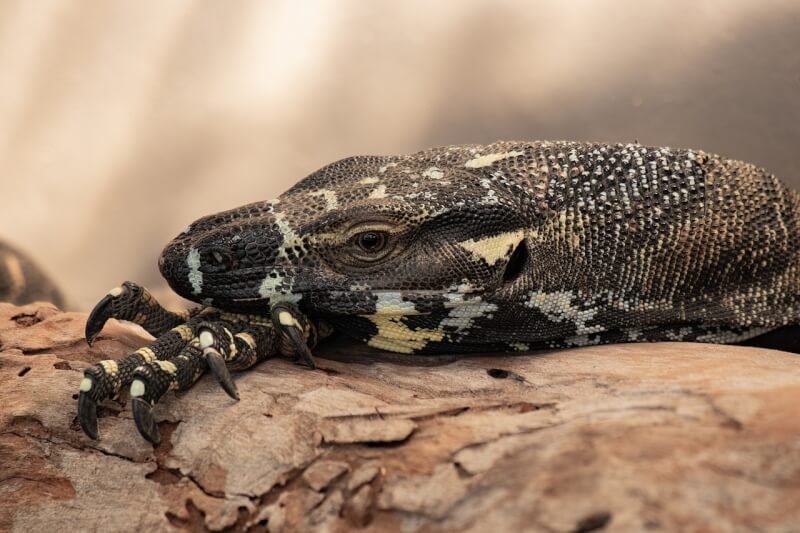
Minimum Enclosure Size
Ensuring that your snake has sufficient space to live and thrive is essential. Here are some general and specific guidelines to help you determine the minimum enclosure size for your snake.
General Guidelines
As a general rule, the enclosure should be at least as long as the snake’s total length. This allows the snake to stretch out comfortably and move around. The width of the enclosure should be at least one-third of the snake’s length. Adequate space is crucial for your snake’s physical and mental well-being.
Specific Guidelines for Popular Snake Species
When it comes to specific snake species, it is important to research and understand their specific needs. For example:
- Ball Pythons: A 20-gallon enclosure is suitable for juvenile ball pythons, but adults will require at least a 40 to 60-gallon enclosure.
- Corn Snakes: A 20-gallon enclosure is suitable for most corn snakes, but larger species or particularly active individuals may need a larger enclosure.
- Boa Constrictors: Boas require larger enclosures. For juveniles, a 40 to 60-gallon enclosure is recommended, while adults will need a minimum of a 120 to 180-gallon enclosure.
These are just a few examples, and it’s important to research the specific size requirements for your snake species.
Space for Essentials
Aside from the overall size of the enclosure, it is important to provide adequate space for the essential elements that your snake needs for a comfortable and healthy life.
Hideouts and Burrowing Space
All snakes require hideouts or hiding spots. These hideouts allow them to retreat and feel secure. Provide at least one hideout on the warm side of the enclosure and one on the cool side. Additionally, if your snake is a burrowing species, ensure there is enough substrate depth to allow it to dig and create tunnels.
Water Dish
A water dish is essential for snakes to stay hydrated and to soak if they desire. Choose a dish that is large enough for your snake to fit in and ensure that it is easily accessible and kept clean.
Temperature and Humidity Control
Snakes are ectothermic, meaning they rely on their environment to regulate their body temperature. Ensure that your enclosure provides a temperature gradient, with a warm side and a cooler side. Use appropriate heating elements, such as heat mats or ceramic heat emitters, to achieve and maintain the correct temperature range. Additionally, consider the humidity requirements of your snake species and provide appropriate means to maintain the desired humidity levels.
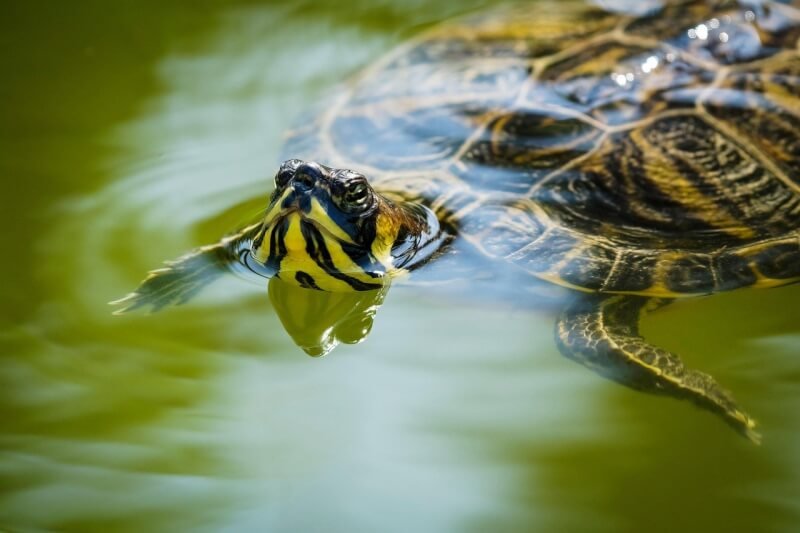
Accessibility and Ventilation
Consider how easy it is to access the enclosure for cleaning, feeding, and handling purposes. Some enclosures offer front access, while others have top access. The choice depends on your personal preferences and the needs of your snake.
Front Access vs Top Access
Front-access enclosures allow for easy access to the interior of the enclosure. This is especially useful for daily maintenance, such as feeding and cleaning, as well as for providing enrichment and interacting with your snake. On the other hand, top-access enclosures may be suitable for snakes that prefer a more secure and secluded environment, as they allow for minimal disturbance.
Ventilation Needs
Proper ventilation is crucial to maintain fresh airflow and prevent the buildup of stale air. Ensure that the enclosure you choose has appropriate ventilation options to allow for the exchange of air. This is particularly important for snake species that require high humidity levels, as excess moisture can lead to respiratory problems.
Additional Considerations
Apart from the essential factors mentioned above, there are a few additional considerations to keep in mind when choosing the right size enclosure for your snake.
Future Growth
Snakes grow and will eventually outgrow their initial enclosure. Consider the potential growth rate of your snake and plan for a larger enclosure in the future. It is more cost-effective and less stressful for the snake to provide a suitable enclosure from the beginning rather than having to constantly upgrade as it grows.
Expandable Enclosures
Some enclosures offer expandable options, allowing you to add additional space or sections as your snake grows. These modular enclosures can be a great investment, providing flexibility and adaptability to accommodate your snake’s changing needs.
Multi-Species Setups
If you plan to keep multiple snakes, consider their individual needs and compatibility. Some snakes can be housed together, while others are solitary and require separate enclosures. Ensure that each snake has enough space and that their habitat requirements align.
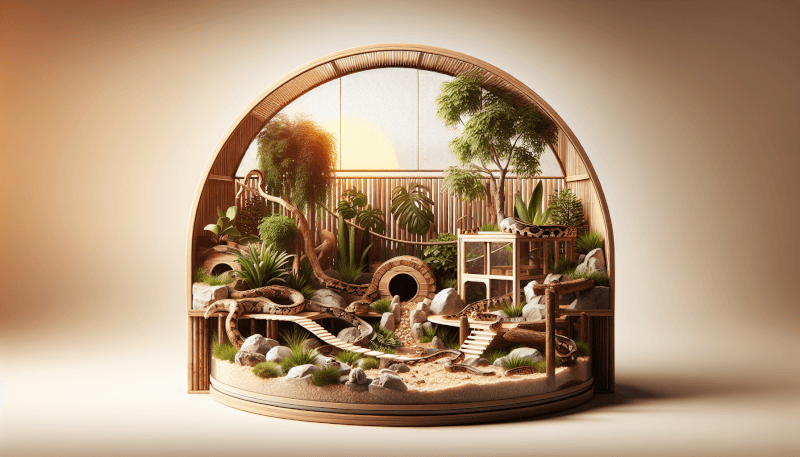
Setups for Juveniles
As mentioned earlier, juvenile snakes may initially require smaller enclosures but will eventually outgrow them. Here are some considerations for setting up enclosures for juvenile snakes.
Temporary Enclosures
For juvenile snakes, temporary enclosures can be suitable to provide enough space while they are small. These can be plastic or glass enclosures that are appropriately sized for their current size. However, it is essential to plan for their future growth and have a larger enclosure ready as they mature.
Growth Accommodation
As your snake grows, it is important to upgrade its enclosure to provide sufficient space. It is advisable to have a plan in place for the next enclosure size or invest in an expandable enclosure. Do regular checks to ensure that your snake is not being restricted by its current setup.
Setups for Adults
When it comes to adult snake enclosures, you need to consider the potential size and requirements of your snake.
Avoiding Overcrowding
As snakes reach adulthood, they require more space to move around and feel comfortable. Avoid overcrowding by providing ample space for the snake’s size and activity level. Overcrowded enclosures can lead to stress and health issues for your snake.
Consideration for Large Species
Large snake species, such as reticulated pythons or green anacondas, require significantly more space due to their size and activity level. Ensure that you have a suitable enclosure that can accommodate their needs comfortably. Research the specific requirements of large snake species and be prepared to invest in a spacious and secure enclosure.
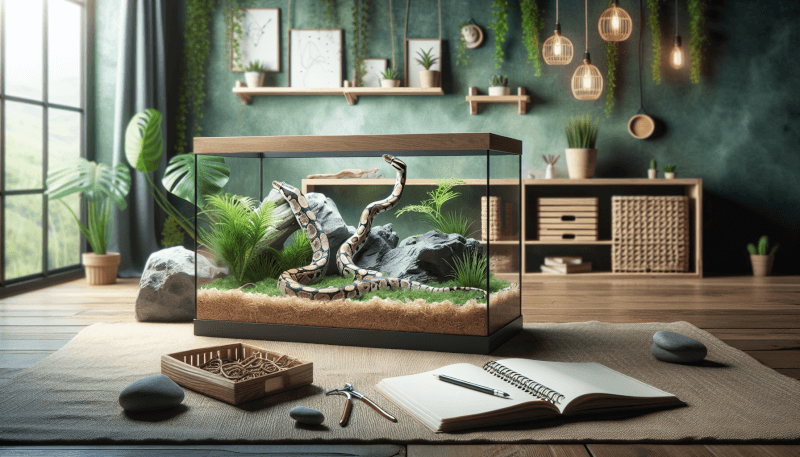
DIY Enclosure vs Store-Bought
When deciding on an enclosure for your snake, consider whether to opt for a DIY enclosure or a store-bought one. Each option has its own advantages.
Advantages of DIY Enclosures
DIY enclosures offer flexibility and customization. You can tailor the enclosure to meet the specific needs of your snake and create a unique and personalized habitat. Additionally, DIY enclosures can often be more cost-effective than store-bought options.
Benefits of Store-Bought Enclosures
Store-bought enclosures provide convenience and peace of mind. They are pre-designed for specific snake species and often come with built-in features such as heating elements, ventilation, and hideouts. Store-bought enclosures are also ready to use, saving you time and effort in setting up a DIY enclosure.
Conclusion
When choosing the right size enclosure for your snake, it is crucial to prioritize the snake’s needs and have an understanding of its specific requirements. Consider factors such as snake species, age, and size, as well as activity level, climbing habits, and dwelling habits. Choose an enclosure type that best suits your snake’s needs, such as glass tanks, plastic cages, wooden vivariums, or PVC enclosures. Ensure that the enclosure provides enough space for essentials such as hideouts, a water dish, and proper temperature and humidity control. Consider accessibility, ventilation, and additional factors like future growth, expandable options, and multi-species setups. Create suitable setups for both juvenile and adult snakes, avoiding overcrowding and accommodating their needs appropriately. Finally, weigh the pros and cons of DIY enclosures versus store-bought options and make an informed decision that best suits your snake and circumstances. By prioritizing your snake’s needs and ensuring adequate space, you can provide a comfortable and fulfilling environment for your beloved reptile companion.

